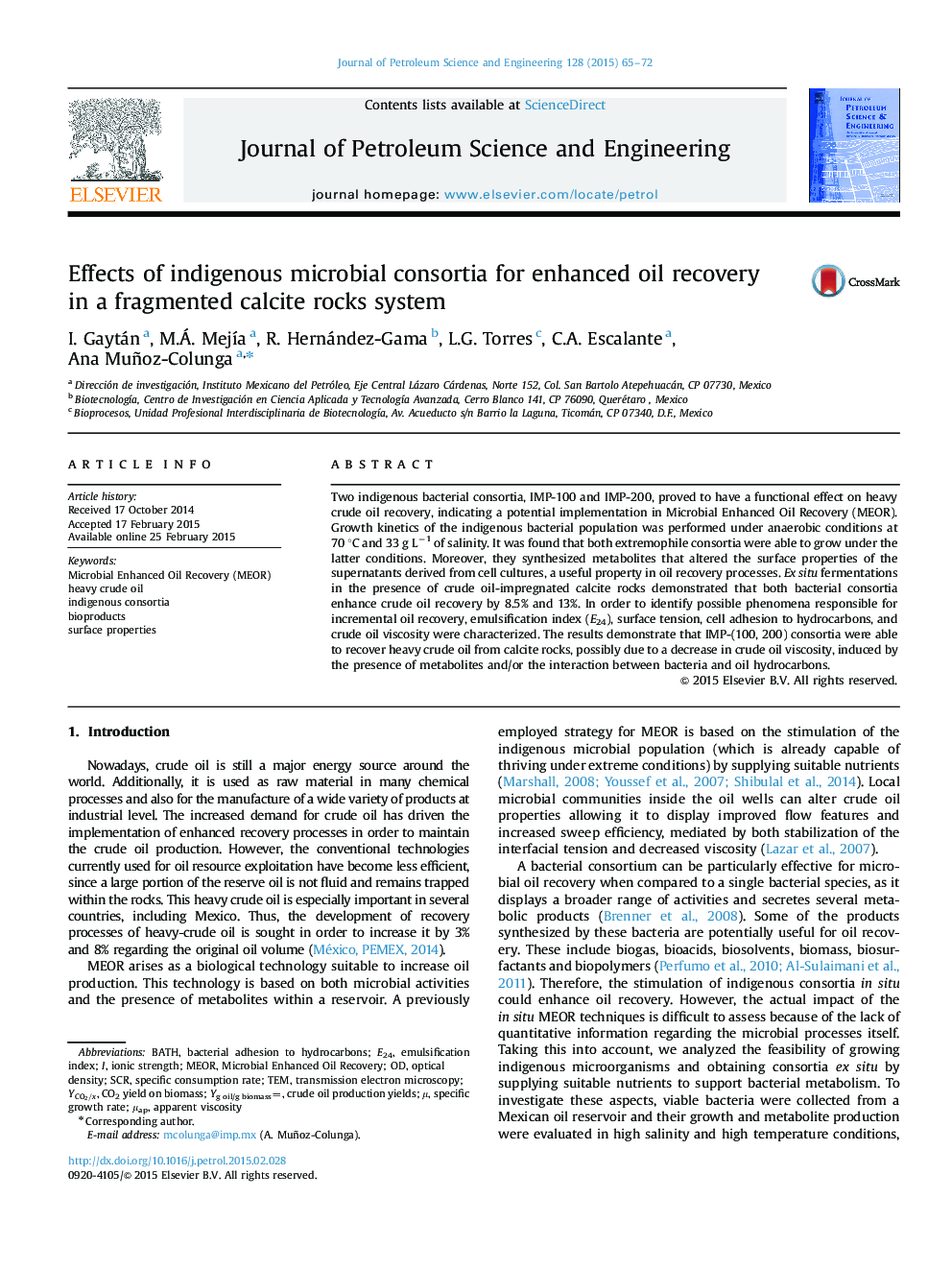| Article ID | Journal | Published Year | Pages | File Type |
|---|---|---|---|---|
| 1754788 | Journal of Petroleum Science and Engineering | 2015 | 8 Pages |
•Two extremophile consortia were able to grow in SSI-M medium.•Indigenous consortia modified the surface properties of the supernatants.•Consortia demonstrated its functional effect on heavy crude oil recovery.•Physical properties of the heavy crude oil were improved by bacterial activity.•Microbial strategies are alternatives with potential in oil recovery technologies.
Two indigenous bacterial consortia, IMP-100 and IMP-200, proved to have a functional effect on heavy crude oil recovery, indicating a potential implementation in Microbial Enhanced Oil Recovery (MEOR). Growth kinetics of the indigenous bacterial population was performed under anaerobic conditions at 70 °C and 33 g L−1 of salinity. It was found that both extremophile consortia were able to grow under the latter conditions. Moreover, they synthesized metabolites that altered the surface properties of the supernatants derived from cell cultures, a useful property in oil recovery processes. Ex situ fermentations in the presence of crude oil-impregnated calcite rocks demonstrated that both bacterial consortia enhance crude oil recovery by 8.5% and 13%. In order to identify possible phenomena responsible for incremental oil recovery, emulsification index (E24), surface tension, cell adhesion to hydrocarbons, and crude oil viscosity were characterized. The results demonstrate that IMP-(100, 200) consortia were able to recover heavy crude oil from calcite rocks, possibly due to a decrease in crude oil viscosity, induced by the presence of metabolites and/or the interaction between bacteria and oil hydrocarbons.
